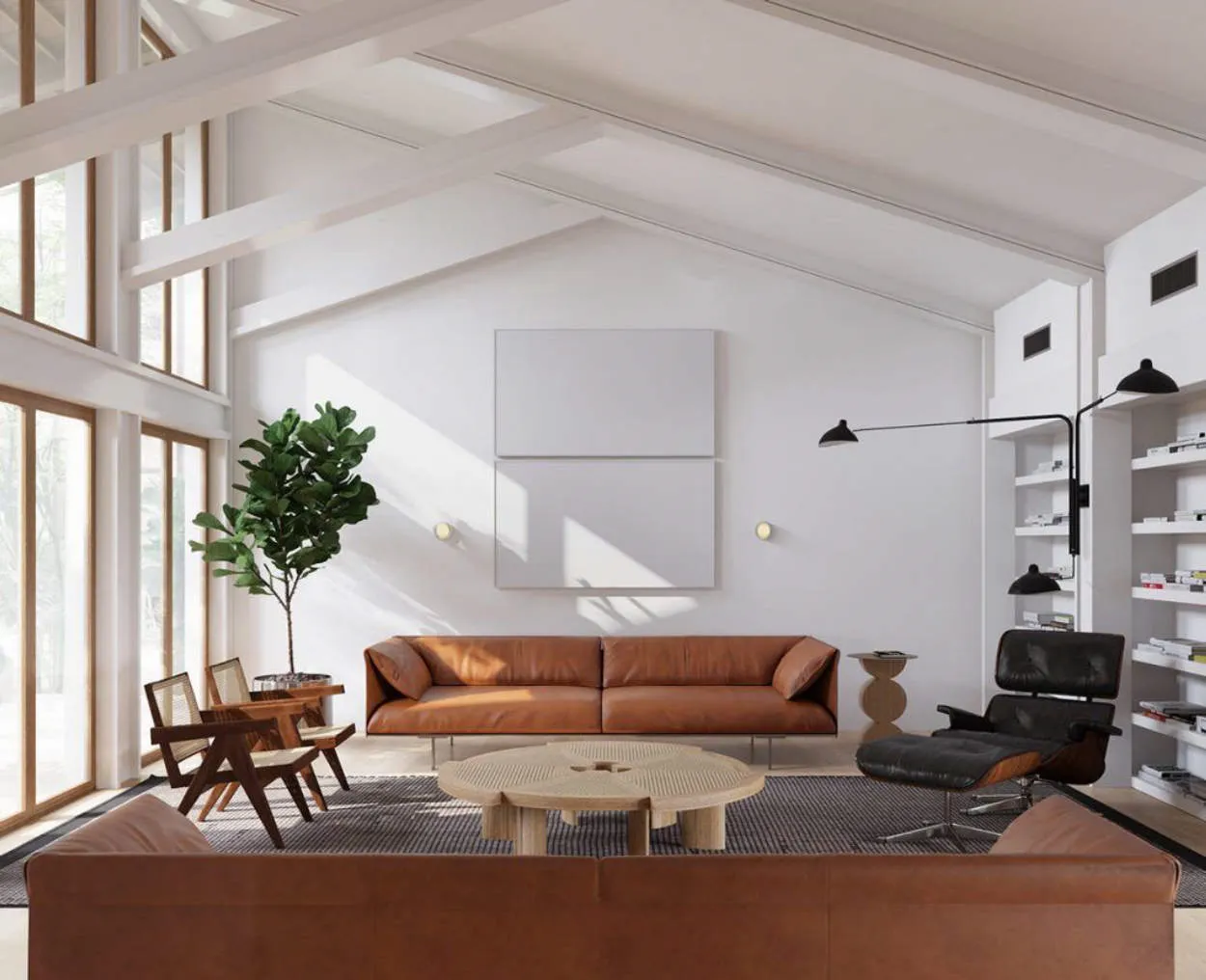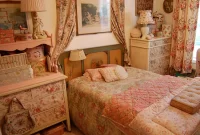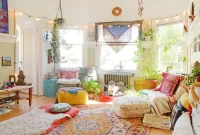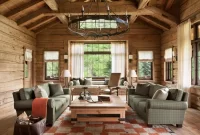The art of minimalist home decoration is about creating a serene and clutter-free living space. By focusing on simplicity and functionality, minimalist design aims to enhance the quality of life by allowing room for only the essentials. Discover how to achieve a peaceful and stylish home through minimalism.
Defining Minimalism in Home Decor
Minimalism in home decor refers to a design and lifestyle approach that focuses on simplicity, functionality, and a deliberate reduction of clutter. It is characterized by clean lines, neutral colors, and a sense of openness.
At its core, minimalist home decoration aims to create a tranquil and uncluttered space that promotes relaxation and mindfulness. The key principle is to eliminate unnecessary objects and only keep essential items that serve a purpose.
In a minimalist home, each item holds significance and purpose. Furniture pieces are typically sleek, with simple designs and minimal ornamentation. The focus is on quality rather than quantity, with a preference for natural materials like wood, stone, and metals.
Color palettes in minimalist home decor are generally neutral, often featuring shades of white, gray, and beige. This creates a sense of harmony and allows light to bounce effortlessly throughout the space. A pop of color may be introduced sparingly through a carefully selected accent piece or artwork to create visual interest.
Organization plays a crucial role in minimalist home decor. Storage solutions are essential to keep surfaces clear and free from clutter. Built-in cabinets, shelves, and hidden storage compartments are popular choices to maintain a clean and uncluttered aesthetic.
Lastly, minimalist home decor extends beyond physical objects. It encourages a mindful approach to consumption and a focus on experiences rather than material possessions. This mindset promotes sustainability and encourages individuals to prioritize what truly brings them joy.
Key Elements for a Minimalist Look
A minimalist look emphasizes simplicity, functionality, and clean lines. Achieving this aesthetic in your home decoration can create a calming and clutter-free environment. Here are some key elements to consider when embracing minimalist home decoration:
Neutral Color Palette
Start with a neutral color palette as the foundation of your minimalist design. Opt for shades of white, beige, gray, or light pastels to create a sense of tranquility and spaciousness.
Functional Furniture
Choose furniture pieces that serve a purpose and have a clean and uncluttered design. Focus on functionality rather than excess ornamentation. Keep furniture lines simple and avoid excessive pieces that may clutter the space.
Clean Lines and Geometric Shapes
Avoid intricate patterns and opt for clean lines and geometric shapes in furniture, décor, and artwork. Minimalist design values simplicity, so choose items with sleek and straight edges.
Decluttered Space
One of the fundamental principles of minimalist decoration is to eliminate clutter. Keep only the essential items and find organized storage solutions to maintain a tidy and uncluttered space.
Minimalist Artwork
Select simple and minimalist artwork to enhance your space. Abstract or monochromatic pieces can complement the clean aesthetic of a minimalist home.
Natural Materials
Incorporate natural materials like wood, stone, or bamboo to bring a sense of warmth and earthiness to your minimalist space. Use them sparingly to maintain a clean and uncluttered look.
Ample Natural Light
Maximize natural light to create an airy and open ambiance. Remove heavy curtains or blinds, and instead, let the sunlight fill the room. If privacy is a concern, consider using sheer curtains or blinds.
Simplicity in Accessories
When choosing accessories, prioritize simplicity. Select a few key pieces that add visual interest without overwhelming the space. Remember, less is more in minimalist decoration.
Empty Space
Empty space is essential in minimalist design. Allow for breathing room by leaving some areas intentionally empty. This negative space helps highlight the key elements and maintain a sense of calmness.
Quality over Quantity
Invest in high-quality items that will last longer instead of filling your space with cheap, disposable items. By focusing on quality, you ensure that your minimalist home remains timeless.
Selecting Minimalist Furniture
When it comes to decorating a minimalist home, choosing the right furniture is essential. Minimalist furniture should not only be visually appealing but also functional and free from unnecessary decorations. Here are some key factors to consider when selecting minimalist furniture:
1. Simplicity
Embrace simplicity in the design of your furniture. Opt for clean lines, sleek shapes, and a neutral color palette. Avoid ornate details or excessive embellishments that can clutter the space.
2. Functionality
Minimalist furniture is known for its functionality. Look for pieces that serve a purpose and have multi-functional features. Choose furniture that can provide storage solutions or serve as a space-saving solution.
3. Quality
Invest in high-quality furniture that will stand the test of time. Opt for durable materials and solid construction. Quality furniture not only lasts longer but also adds a touch of sophistication to your minimalist home.
4. Scale and Proportions
Consider the scale and proportions of the furniture in relation to the size of your space. Oversized furniture can overpower a minimalist room, while undersized pieces may make it feel empty. Find the right balance that complements the room’s dimensions.
5. Versatility
Choose furniture that can adapt to different styles and arrangements. Versatile pieces can easily evolve with your changing taste or home decor trends, providing long-term value.
By carefully selecting minimalist furniture based on simplicity, functionality, quality, scale, proportions, and versatility, you can create a stylish and harmonious minimalist home that reflects your personal style and values.
Incorporating Color and Texture
When it comes to minimalist home decoration, many people assume that it is all about neutral colors and simple textures. However, incorporating color and texture is essential to create a warm and inviting space. By carefully selecting and combining different hues and materials, you can add personality and visual interest to your minimalist interior.
1. Color
While neutral shades like white, beige, and grey are popular in minimalist design, don’t be afraid to experiment with pops of color. Choose a single bold shade as an accent color and use it sparingly throughout the room. This can be done through artwork, throw pillows, or even a statement piece of furniture. Remember to keep the color palette cohesive and avoid overwhelming the space.
2. Texture
Adding texture is another way to elevate your minimalist decor. Consider incorporating different materials such as wood, metal, glass, or textiles. For example, a textured rug can provide warmth and softness to a room with clean lines and sleek furniture. Textured wall art or woven accents can also create visual interest without cluttering the space.
3. Balance
When incorporating color and texture, it’s important to strive for balance. Ensure that the colors and textures you choose complement each other and work harmoniously within the overall design scheme. Too much color or texture can disrupt the minimalist aesthetic, so opt for a few carefully selected elements that enhance the space rather than overwhelm it.
4. Simplicity
Remember that simplicity is still at the core of minimalist design. Even when incorporating color and texture, keep the overall look clean and uncluttered. Avoid excessive patterns or intricate details that can take away from the serene and understated feel of a minimalist space.
By carefully incorporating color and texture into your minimalist home decoration, you can create a space that reflects your personal style while maintaining the simplicity and elegance that defines this design philosophy.
Tips for Decluttering Your Space
When it comes to creating a minimalist home decoration, decluttering is a crucial step. Here are some essential tips to help you achieve a clutter-free space:
-
Start with a plan
Before diving into decluttering, make a plan of action. Identify the areas that need the most attention and prioritize accordingly.
-
One category at a time
Tackling your belongings by category rather than room can be more effective. Begin with items that are easier to make decisions about, such as clothes or books, before moving on to more sentimental items.
-
The three-box method
As you go through your belongings, use three boxes or bags to sort items into three categories: keep, donate/sell, and discard. This will help you make decisions and keep the process organized.
-
Only keep what sparks joy
Embrace the KonMari method and choose to keep only the items that truly bring you joy and serve a purpose. Letting go of unnecessary possessions can be liberating.
-
Create designated storage spaces
After decluttering, make sure everything has a designated place. Invest in practical storage solutions like shelves, bins, or drawer dividers to maintain an organized space.
-
Minimalist mindset
Adopting a minimalist mindset is crucial for maintaining a clutter-free home. Regularly assess your belongings and refrain from accumulating unnecessary items.
By following these tips, you can declutter your space and create a minimalist home decoration that is soothing, organized, and visually appealing.
Conclusion
In conclusion, minimalist home decoration offers a sleek and clutter-free aesthetic, promoting relaxation and mindfulness. By focusing on essential elements and eliminating excess, minimalist style creates a harmonious and calming environment. Incorporating simplicity, functionality, and thoughtful design, minimalist home decoration allows individuals to transform their living spaces into peaceful sanctuaries.







